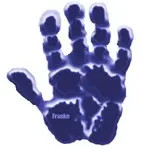MrMikeJackie
Bronze Member
- Joined
- Nov 3, 2013
- Messages
- 1,751
- Reaction score
- 2,258
- Golden Thread
- 2
- Location
- Long Island
- 🥇 Banner finds
- 2
- 🏆 Honorable Mentions:
- 1
- Detector(s) used
- CTX 3030,
Xp Deus,
That's it, I'm done.
- Primary Interest:
- Metal Detecting
- #1
Thread Owner
So we all know a concentric coil goes deeper than a double d coil, that goes without question. But is my lust for depth holding me back? A dd gives you a nice long sweeping coverage albeit not as deep but I'm covering more ground. At let's say 6inches my concentric 12 inch coil now has the footprint of maybe 4 inches? Even less the deeper you go. Yea I can hit a dime 12 inches down but I really have to be over that coin as the point of my scan is now reduced to like an inch. To get the best out of my concentric coil I have to slow down to a snails pace and overlap my swing by inches. The dd will give me say 6-8 inches of depth with a scan the length of my coil. So my question is should I switch to a dd as I might be missing targets between swings?
Last edited:




